Country
Crash of a Cessna 340A in Tampa: 2 killed
Date & Time:
Mar 18, 2016 at 1130 LT
Registration:
N6239X
Survivors:
No
Schedule:
Tampa – Pensacola
MSN:
340A-0436
YOM:
1978
Crew on board:
1
Crew fatalities:
Pax on board:
1
Pax fatalities:
Other fatalities:
Total fatalities:
2
Aircraft flight hours:
3963
Circumstances:
The airline transport pilot and pilot-rated passenger were departing on an instrument flight rules (IFR) cross country flight from runway 4 in a Cessna 340A about the same time that a private pilot and pilot rated passenger were departing on a visual flight rules repositioning flight from runway 36 in a Cessna 172M. Visual meteorological conditions prevailed at the airport. The runways at the nontowered airport converged and intersected near their departure ends. According to a witness, both airplanes had announced their takeoff intentions on the airport's common traffic advisory frequency (CTAF), which was not recorded; the Cessna 340A pilot's transmission occurred about 10 to 15 seconds before the Cessna 172M pilot's transmission. However, the witness stated that the Cessna 172M pilot's transmission was not clear, but he was distracted at the time. Both occupants of the Cessna 172M later reported that they were constantly monitoring the CTAF but did not hear the transmission from the Cessna 340A pilot nor did they see any inbound or outbound aircraft. Airport video that captured the takeoffs revealed that the Cessna 172M had just lifted off and was over runway 36 approaching the intersection with runway 4, when the Cessna 340A was just above runway 4 in a wings level attitude with the landing gear extended and approaching the intersection with runway 36. Almost immediately, the Cessna 340A then began a climbing left turn with an increasing bank angle while the Cessna 172M continued straight ahead. The Cessna 340A then rolled inverted and impacted the ground in a nose-low and left-wing-low attitude. The Cessna 172M, which was not damaged, continued to its destination and landed uneventfully. The Cessna 340A was likely being flown at the published takeoff and climb speed of 93 knots indicated airspeed (KIAS). The published stall speed for the airplane in a 40° bank was 93 KIAS, and, when the airplane reached that bank angle, it likely exceeded the critical angle of attack and entered an aerodynamic stall. Examination of the Cessna 340A wreckage did not reveal any preimpact mechanical malfunctions that would have precluded normal operation. Because of a postcrash fire, no determination could be made as to how the radios and audio panel were configured for transmitting and receiving or what frequencies were selected. There were no reported discrepancies with the radios of the Cessna 172M, and there were no reported difficulties with the communication between the Cessna 340A and the Federal Aviation Administration facility that issued the airplane's IFR clearance. Additionally, there were no known issues related to the CTAF at the airport. Toxicological testing detected unquantified amounts of atorvastatin, diphenhydramine, and naproxen in the Cessna 340A pilot's liver. The Cessna 340A pilot's use of atorvastatin or naproxen would not have impaired his ability to hear the radio announcements, see the other airplane taking off on the converging runway, or affected his performance once the threat had been detected. Without an available blood level of diphenhydramine, it could not be determined whether the drug was impairing or contributed to the circumstances of the accident.
Probable cause:
The intentional low altitude maneuvering during takeoff in response to a near-miss with an airplane departing from a converging runway, which resulted in an exceedance of the airplane's critical angle of attack and a subsequent aerodynamic stall.
Final Report:

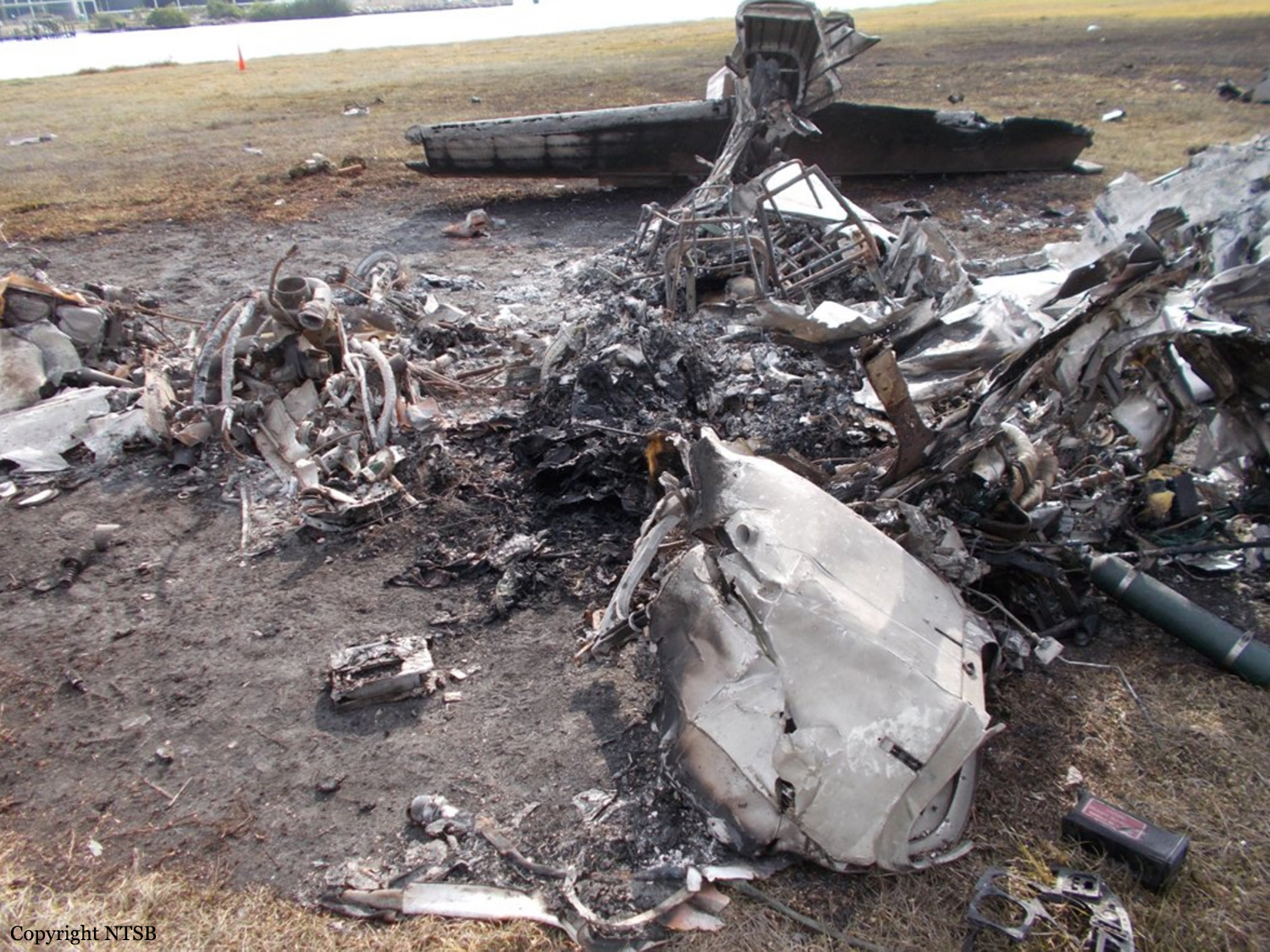
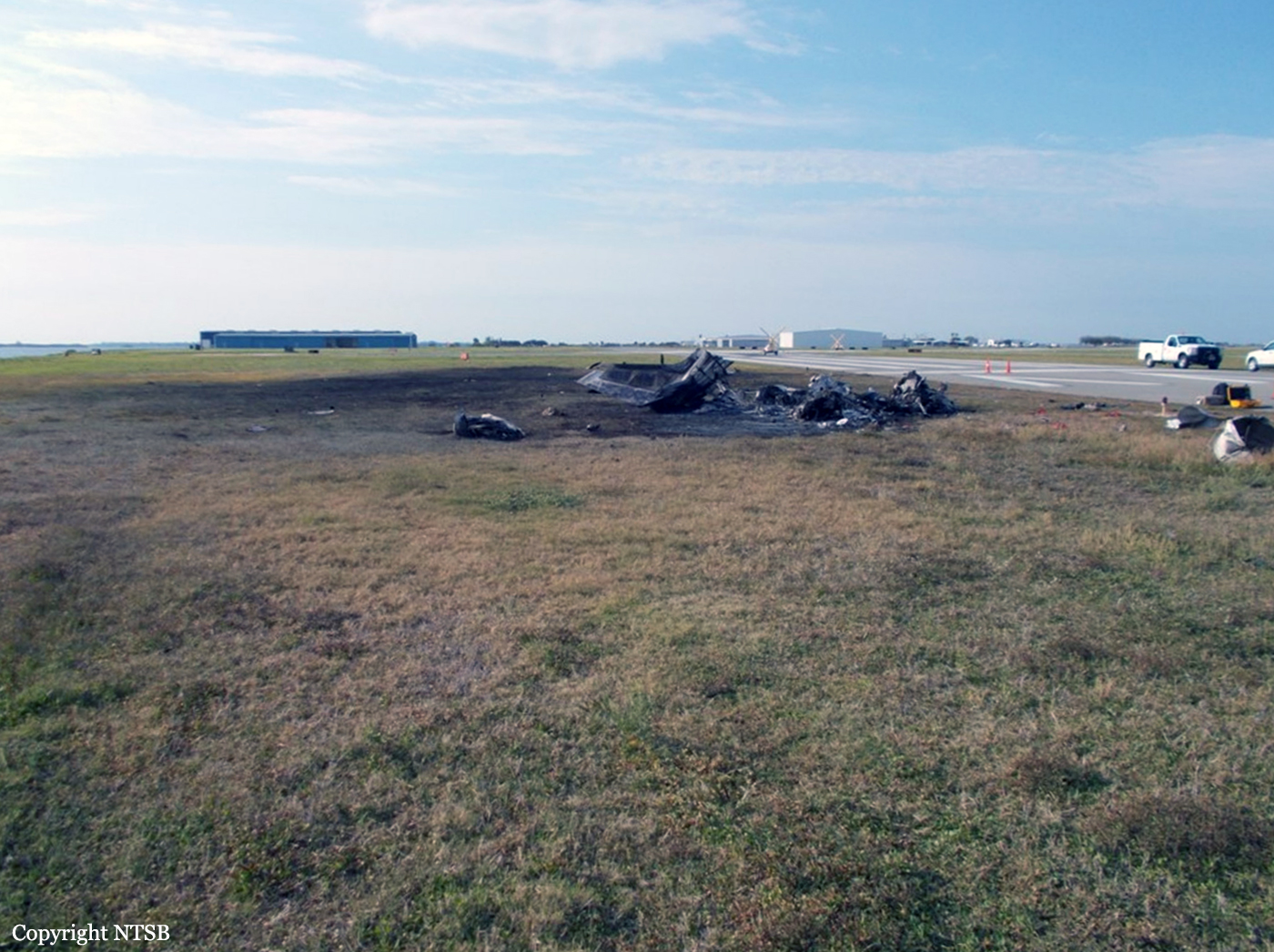

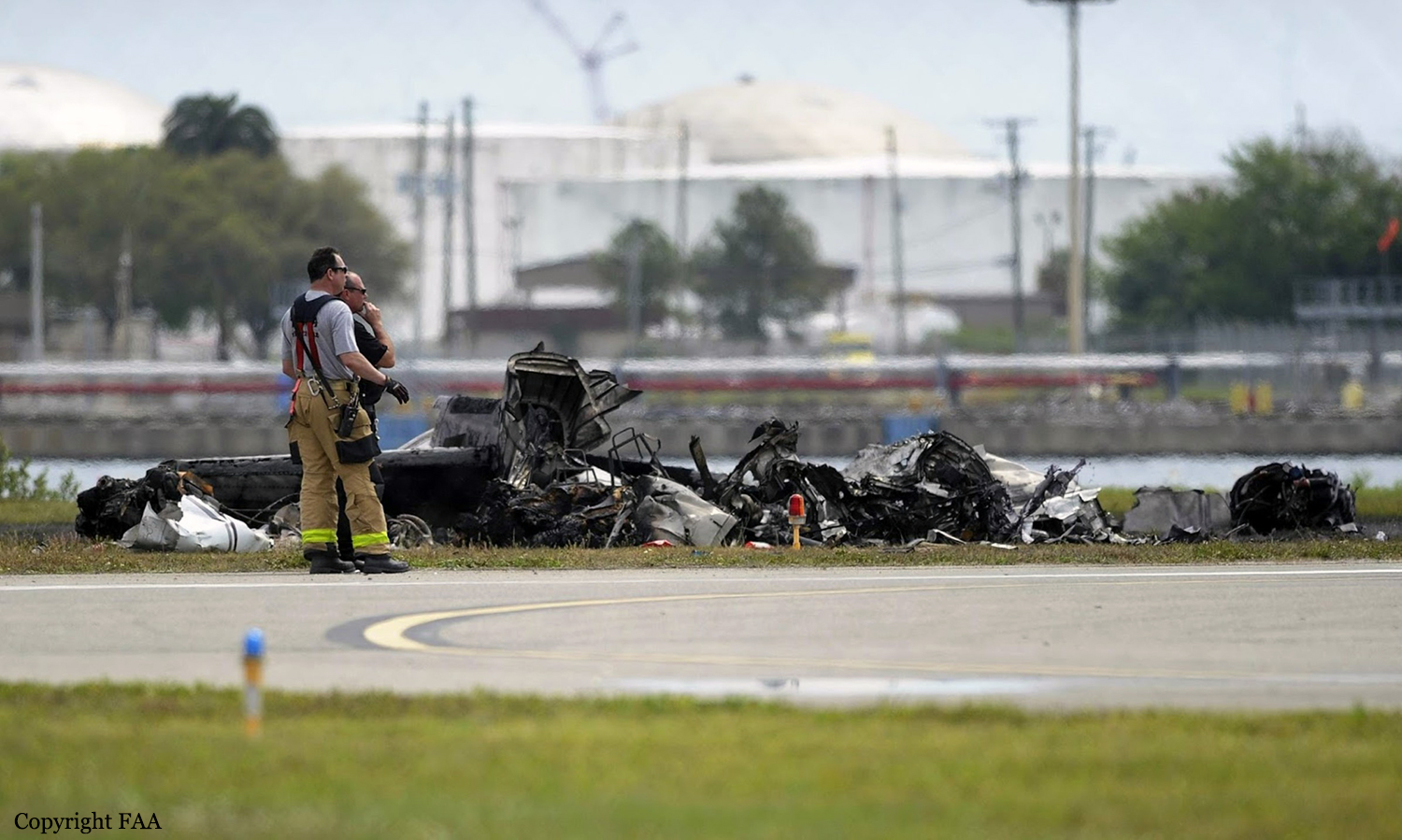
Crash of a Cessna 340A in Augsburg
Date & Time:
Dec 8, 2015 at 0942 LT
Registration:
D-IBEL
Survivors:
Yes
Schedule:
Mönchengladbach – Augsburg
MSN:
340A-1814
YOM:
1984
Crew on board:
1
Crew fatalities:
Pax on board:
4
Pax fatalities:
Other fatalities:
Total fatalities:
0
Captain / Total hours on type:
75.00
Aircraft flight hours:
3747
Circumstances:
The twin engine aircraft departed Mönchengladbach on a flight to Augsbourg, carrying four passengers and one pilot. On descent to Augsburg Airport, the pilot was informed by ATC that weather conditions at destination were worse than predicted, that the visibility was estimated between 225 and 250 metres, thus below minimums. The pilot acknowledged and informed ATC about his intention to attempt an approach and that he would divert to Oberpfaffenhofen if necessary. On short final, at a height of 200 feet, the pilot established a visual contact with the runway lights and decided to continue. After passing over the threshold, he reduced the engine power when the aircraft entered a stall and impacted the runway surface. On impact, the undercarriage were torn off and the aircraft slid for 104 metres before coming to rest, bursting into flames. Four occupants were seriously injured and the fifth was slightly injured. The aircraft was partially destroyed by a post crash fire.
Probable cause:
The accident is the consequence of the pilot's decision to continue the approach and not to initiate a go-around procedure, which resulted in the aircraft entering an attitude he was unable to control. Poor approach planning on part of the pilot and poor decision making during the approach contributed to the accident, as well as the fact that the runway visual range (RVR) was 250 metres, which was below minimums.
Final Report:
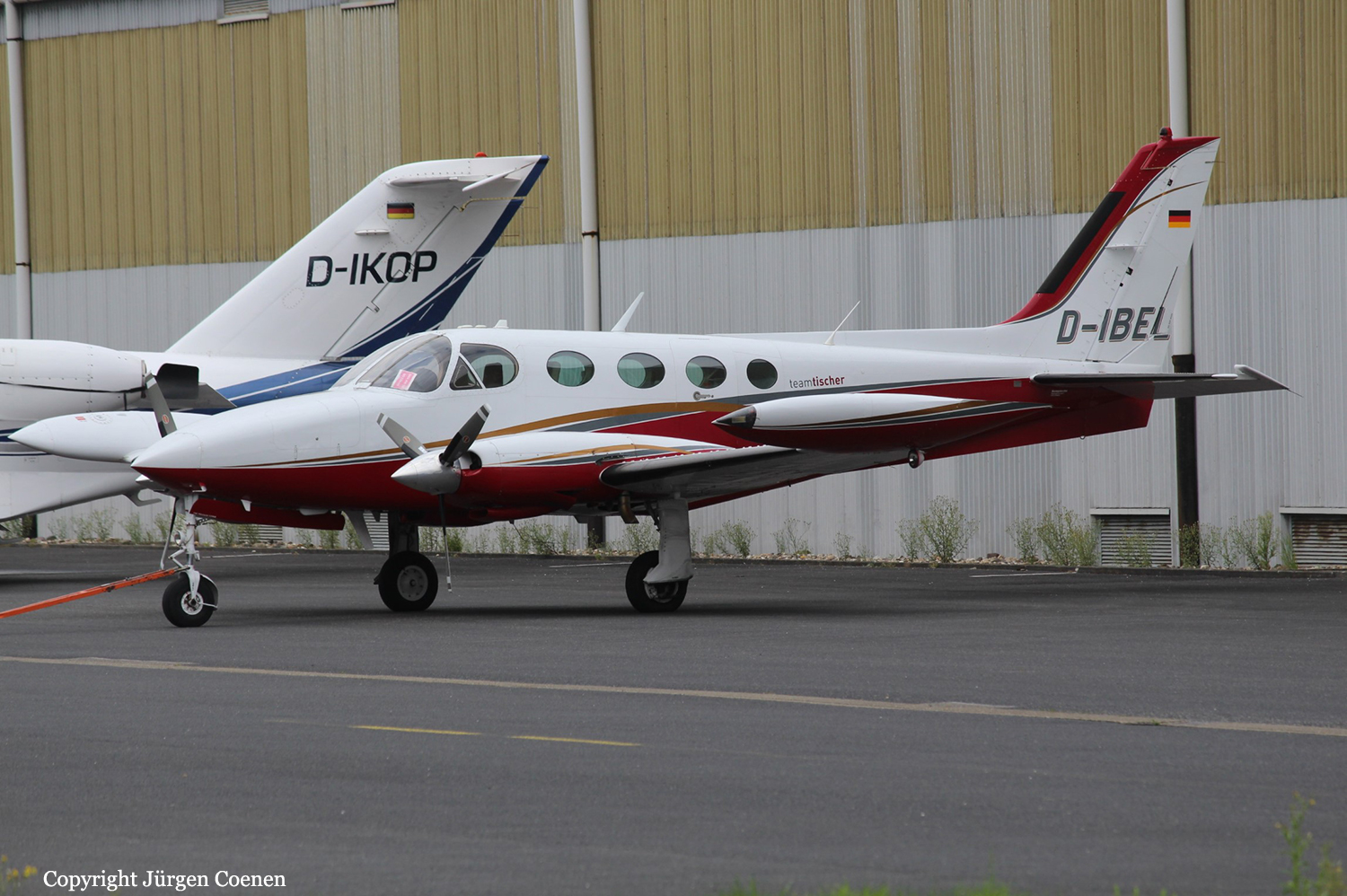

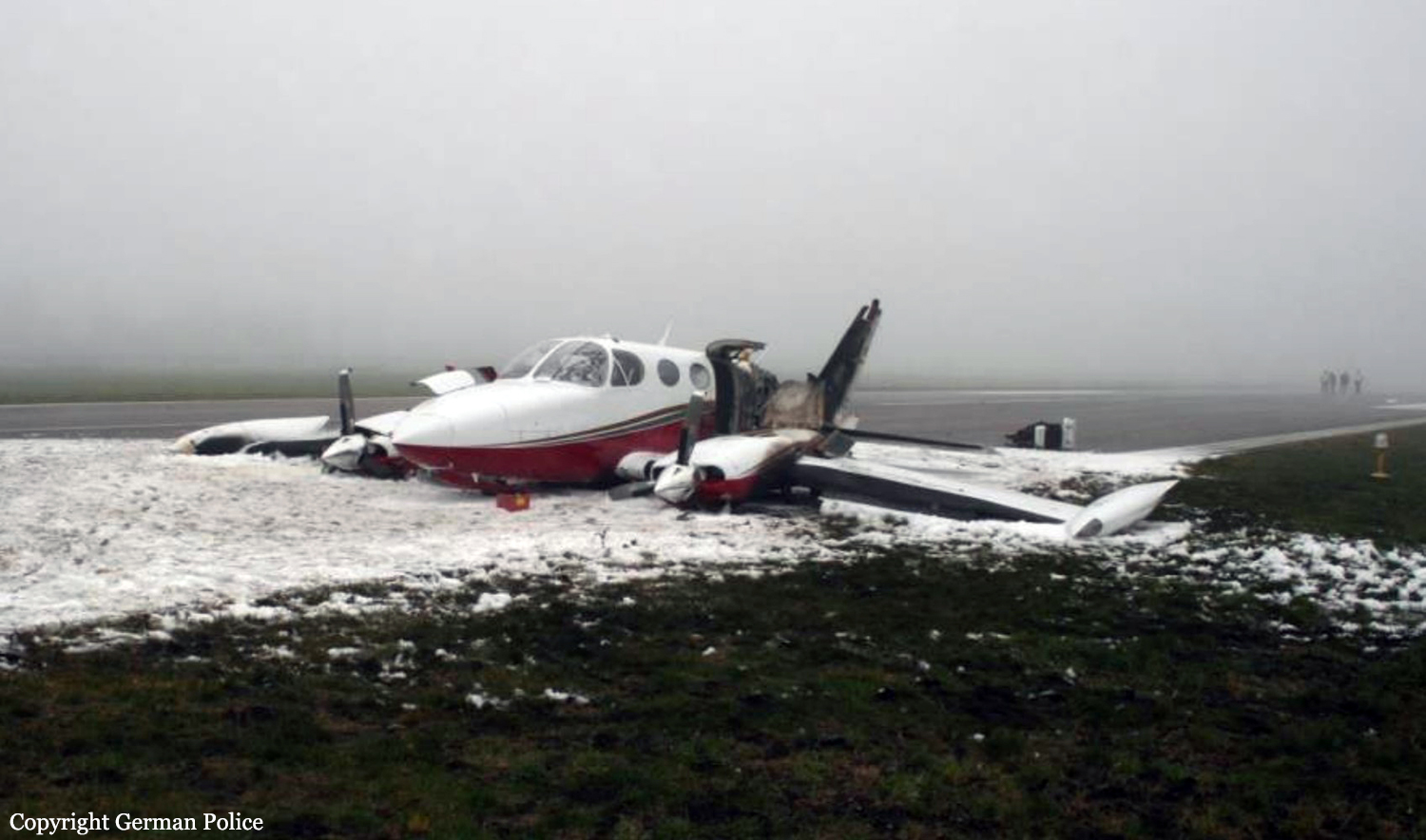
Crash of a Cessna 340 in Riyadh
Date & Time:
Dec 3, 2014 at 1757 LT
Registration:
N340JC
Survivors:
Yes
Schedule:
Heraklion – Hurghada – Riyadh
MSN:
340-0162
YOM:
1972
Crew on board:
2
Crew fatalities:
Pax on board:
0
Pax fatalities:
Other fatalities:
Total fatalities:
0
Circumstances:
The crew was completing a ferry flight from Heraklion to Riyadh with an intermediate stop in Hurghada, Egypt. On final approach to Riyadh-King Khaled Airport, at an altitude of about 600 feet, the left engine lost power and failed, followed 10 seconds later by the right engine. The crew reported his situation to ATC when the aircraft lost height, impacted ground and slid for few dozen metres before coming to rest against a pile of rocks. One of the pilot suffered a broken wrist while the second pilot escaped uninjured. The aircraft was damaged beyond repair.
Probable cause:
Double engine failure on approach due to fuel exhaustion. It was determined that the crew miscalculated the fuel consumption for the flight from Hurghada to Riyadh.

Crash of a Cessna 340A off Freeport: 4 killed
Date & Time:
Aug 18, 2014 at 1002 LT
Registration:
N340MM
Survivors:
No
Schedule:
Ormond Beach - Freeport
MSN:
340A-0635
YOM:
1978
Crew on board:
1
Crew fatalities:
Pax on board:
3
Pax fatalities:
Other fatalities:
Total fatalities:
4
Aircraft flight hours:
5572
Circumstances:
On 18 August, 2014 at 10:02am local time (1402Z) UTC a fixed wing, twin-engine, Cessna 3 4 0 A aircraft, United States registration N340MM, serial number 340A0635, crashed into waters while on a left base to runway 06 at Grand Bahama International Airport (MYGF) Freeport, Grand Bahama, Bahamas. The aircraft departed Ormond Beach Municipal Airport (KOMN) at 8:51am local time (1251Z) for Grand Bahama International Airport (MYGF) on an Instrument Flight Rules (IFR) flight plan with the pilot and three passengers aboard. Sometime after 9:00am (1300Z) an IFR inbound flight plan on N340MM was received by Freeport Approach Control from Miami Center. Upon initial contact with Freeport Approach Control the pilot was given weather advisory, re-cleared to Freeport VOR and told to maintain four thousand feet and report at JAKEL intersection. He was also advised to expect an RNAV runway six approach. After the pilot’s acknowledgement of the information he later acknowledged his position crossing JAKEL. Freeport Approach then instructed the aircraft to descend to two thousand feet and cleared him direct to JENIB intersection for the RNAV runway six (6) approach. After descending to two thousand feet the pilot indicated to Freeport Approach that he had the field in sight and was able to make a visual approach. Freeport Approach re-cleared the aircraft for a visual approach and instructed the pilot to contact Freeport Control Tower on frequency 118.5. At 9:57am (1357Z) N340MM established contact with Freeport Tower and was cleared for the visual approach to runway six; he was told to join the left base and report at five (5) DME. At 10:01am (1401Z) the pilot reported being out of fuel and his intention was to dead stick the aircraft into the airport from seven miles out at an altitude of one thousand five hundred feet. A minute later the pilot radioed ATC to indicate they “were going down and expected to be in the water about five miles north of the airport.” Freeport Tower tried to get confirmation of the last transmission but was unable to. Several more calls went out from Freeport Tower to N340MM but communication was never reestablished. Freeport Control Tower then made request of aircrafts departing and arriving to assist in locating the lost aircraft by over flying the vicinity of the last reported position to see if visual contact could be made. An inbound aircraft reported seeing an aircraft down five miles from the airport on the 300 degree radial of the ZFP VOR. Calls were made to all the relevant agencies and search and rescue initiated. The aircraft was located at GPS coordinates 26˚ 35.708’N and 078˚ 47. 431 W. The aircraft received substantial damage as a result of the impact and crash sequence. There were no survivors.
Probable cause:
The probable cause of this accident has been determined as a lack of situational awareness resulting in a stalled condition and loss of control while attempting to remedy a fuel exhaustion condition at a very low altitude.
Contributing factors:
- The pilot’s incorrect fuel calculations which resulted in fuel exhaustion to both engines.
- Stalled aircraft.
- Loss of situational awareness.
Contributing factors:
- The pilot’s incorrect fuel calculations which resulted in fuel exhaustion to both engines.
- Stalled aircraft.
- Loss of situational awareness.
Final Report:

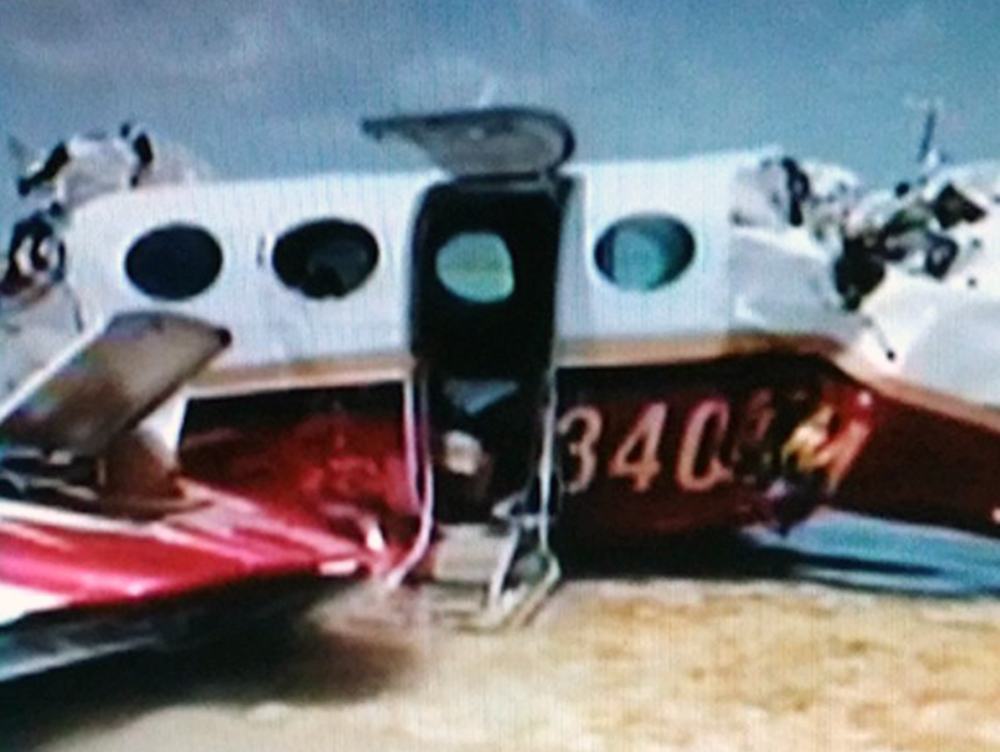
Crash of a Cessna 340A in Hampton Roads: 4 killed
Date & Time:
Oct 10, 2013 at 1209 LT
Registration:
N4TK
Survivors:
No
Schedule:
Fort Lauderdale – Hampton Roads
MSN:
340A-0777
YOM:
1979
Crew on board:
1
Crew fatalities:
Pax on board:
3
Pax fatalities:
Other fatalities:
Total fatalities:
4
Circumstances:
The instrument-rated pilot was on a cross-country flight. According to air traffic control records, an air traffic controller provided the pilot vectors to an intersection to fly a GPS approach. Federal Aviation Administration radar data showed that the airplane tracked off course of the assigned intersection by 6 nautical miles and descended 800 ft below its assigned altitude before correcting toward the initial approach fix. The airplane then crossed the final approach fix 400 ft below the minimum crossing altitude and then continued to descend to the minimum descent altitude, at which point, the pilot performed a missed approach. The missed approach procedure would have required the airplane to make a climbing right turn to 2,500 ft mean sea level (msl) while navigating southwest back to the intersection; however, radar data showed that the airplane flew southeast and ascended and descended several times before leveling off at 2,800 ft msl. The airplane then entered a right 360-degree turn and almost completed another circle before it descended into terrain. Examination of the wreckage revealed no evidence of any preimpact mechanical malfunctions or failures. During the altitude and heading deviations just before impact, the pilot reported to an air traffic controller that adverse weather was causing the airplane to lose "tremendous" amounts of altitude; however, weather radar did not indicate any convective activity or heavy rain at the airplane's location. The recorded weather at the destination airport about the time of the accident included a cloud ceiling of 400 ft above ground level and visibility of 3 miles. Although the pilot reported over 4,000 total hours on his most recent medical application, the investigation could not corroborate those reported hours or document any recent or overall actual instrument experience. In addition, it could not be determined whether the pilot had experience using the onboard GPS system, which had been installed on the airplane about 6 months before the accident; however, the accident flight track is indicative of the pilot not using the GPS effectively, possibly due to a lack of proficiency or familiarity with the equipment. The restricted visibility and precipitation and maneuvering during the missed approach would have been conducive to the development of spatial disorientation, and the variable flightpath off the intended course was consistent with the pilot losing airplane control due to spatial disorientation. Toxicological tests detected ethanol and other volatiles in the pilot's muscle indicative of postmortem production.
Probable cause:
The pilot's failure to maintain airplane control due to spatial disorientation in low-visibility conditions while maneuvering during a missed approach. Contributing to the accident was the pilot's ineffective use of the onboard GPS equipment.
Final Report:


Crash of a Cessna 340A in Paulden: 4 killed
Date & Time:
Oct 4, 2013 at 1300 LT
Registration:
N312GC
Survivors:
No
Schedule:
Bullhead City – Prescott
MSN:
340A-0023
YOM:
1975
Crew on board:
1
Crew fatalities:
Pax on board:
3
Pax fatalities:
Other fatalities:
Total fatalities:
4
Circumstances:
Witnesses located at a gun club reported observing the airplane make a high-speed, low pass from north to south over the club's buildings and then maneuver around for another low pass from east to west. During the second low pass, the airplane collided with a radio tower that was about 50 ft tall, and the right wing sheared off about 10 ft of the tower's top. The tower's base was triangular shaped, and each of its sides was about 2 ft long. One witness reported that the airplane remained in a straight-and-level attitude until impact with the tower. The airplane then rolled right to an almost inverted position and subsequently impacted trees and terrain about 700 ft southwest of the initial impact point. One witness reported that, about 3 to 4 years before the accident, the pilot, who was a client of the gun club, had "buzzed" over the club and had been told to never do so again. A postaccident examination of the engines and the airframe revealed no evidence of a mechanical malfunction or failure that would have precluded normal operation.
Probable cause:
The pilot's failure to maintain sufficient altitude to clear a radio tower while maneuvering at low altitude and his decision to make a high-speed, low pass over the gun club.
Final Report:




